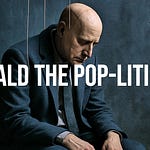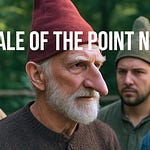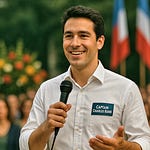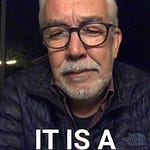Once upon a time, in the groovy 1960s—a time of flowers in hair and jukebox melodies—there lived a peculiar little boy named Niel Armpower. Niel wasn’t just any boy. He was small in size, but his head was filled with enormous questions. While other kids played with hoops or listened to The Beatles, Niel would gaze endlessly at the sky—the moon, the stars, and most of all: the rockets that pierced the heavens like fiery pencils.
He had a dream. Not a modest one, but a colossal one: he wanted to become an astronaut. Not for fame, not for TV glory—but to understand. Because Niel was obsessed with pressure. Not the pressure of school or expectations, but the real, invisible pressure of air.
At university, he learned that if you have a large container with a wall in the middle—oxygen on one side, nothing on the other—and you make a hole in that wall, the oxygen rushes to fill the vacuum. Psssssh! So simple, so powerful. This fascinated Niel. Always from full to empty. Always pressure to vacuum.
But then he asked: How does that work in space? When a rocket flies up—where does the oxygen come from? Where does it go? And how can you survive in a place with no pressure at all?
He asked these questions at space school. The teachers frowned, sighed, looked at each other.
“You ask too many questions, Niel.”
“You need to learn to listen first, Niel.”
“Not everything needs to be understood, Niel.”
But he couldn’t stop. Niel was dismissed. Too stubborn, his report card read.
Yet Niel didn’t give up. He lived alone in a small house at the edge of town, where streetlamps hummed like the start of a jazz tune. In his garage—between old bicycles and dusty newspapers—he began work on his masterpiece: a rocket. Not just any rocket, but one with a giant metal arm on the tip, ending in a fist—his personal emblem. His Armpower.
He worked for years in silence. No funding. No team. No permission. Just pure willpower and science. And one day, under an orange-pink sky filled with birds that seemed to whisper it’s time, the rocket was ready.
He strapped himself in, counted down...
Three. Two. One. Lift-off.
The rocket soared. The air grew thinner. Earth became a marble. Everything rumbled, shook, roared. And then—a bang.
A crash so loud it felt as if the sky itself had cracked. Niel looked up—and saw it: a massive sheet of invisible glass had shattered. He had always dreamed about it, and now he knew for sure: the sky was a dome, and he had punched right through it.
And then, everything changed.
Air from Earth was sucked out like water through a straw. A roaring stream of oxygen blasted upward—hissing, screaming, tearing. Birds dropped from the sky. Oceans rolled up their waves like rugs. People gasped for air that no longer existed. Earth fell silent. Empty. Still.
And in his rocket, Niel saw it all. He looked at the fist—still gleaming, still trembling—and he understood.
He had unlocked the secret of pressure.
He had broken the balance.
And everything had happened exactly as he predicted.
But some truths are too big for humans.
The rocket drifted deeper into the void. And there, in the endless silence of space, floated Niel Armpower—the smartest boy of his time, the first and last human to touch the ceiling of the world.
Niel’s final thought was: “Then how could they have landed on the moon?”
And so the fairytale ends. Not with they lived happily ever after, but with a warning:
Those who seek to understand everything, may lose it all.












